History of Italy – Republic occupying a boot-shaped peninsula of S Europe thrusting into the Mediterranean Sea. It is bounded on the NW by France, on the N by Switzerland , on the NE by Austria, and on the E by Slovenia. Albania and Greece lie across the Adriatic Sea to the SE. Italy includes the large island s of Sardinia and Sicily and the smaller island s of Capri, Ischia, Elba, and the Lipari Island s. The Adriatic Sea is to the E, the Tyrrhenian Sea to the W, the Gulf of Taranto between the heel (Apulia region) and the toe (Calabria region), and the Ionian Sea to the S. The Alps form its northern boundary, while the Apennine Mts form the central spine of the country. Major rivers of historic importance include the Po in the N, the Arno in Tuscany, and the Tiber in the center. Traces of Neand erthal habitation from c. 50,000 b.c. have been found in Italy in the Tiber River valley. Mesolithic culture appeared here c. 8500 b.c. and Neolithic culture c. 4500 b.c. Indo-Europeans from central Europe first reached Italy c. 1850 b.c. The Ligurians and Iberians were related to the aboriginal peoples of Spain and France and shifted while in Italy from a lake dwelling culture, with houses built on stilts over water, to a terramare or fort-dwelling culture. These Italic peoples occupied most of the peninsula S and E of the Tiber. Later in the Bronze Age they were joined by further Indo-European peoples: the Latins around the Tiber, the Umbrians and Sabines to the N and E of Rome, and the Samnites in the S and center. By 1600 b.c. the Etruscans had also arrived in Italy, presumably from Asia Minor, and had settled in present Tuscany. The Oscans inhabited the southeast, and the Gauls the Po River valley in the north (see Gaul). Circa 1000 b.c. the Sicels migrated from the toe of Italy to Sicily to join the native Sicans there.
With the arrival of Greek colonizers in the S c. 800 b.c. Italian history reached a new stage. The Greeks founded colonies throughout the heel and toe and as far N as Naples. Taranto, Brindisi, Reggio di Calabria, and Syracuse and Messina in Sicily, all formed part of Magna Graecia, which still contains a few Greek-speaking communities to this day. Mariners from Phoenicia began founding trading stations in western Sicily in the sixth century b.c., including Palermo and Trapani.
By 500 b.c. the Etruscans had reached the height of their power and culture, dominating an area from the Po Valley down to the Greek colonies around Naples, and controlling the region around Rome in a loose alliance called the Etruscan League. Greek Syracuse controlled all of the heel and toe by 375 b.c. In between these higher cultures, and reached more and more frequently by Phoenician traders on the coast, the native Italic peoples slowly began to organize territories of their own. By 425 b.c. the Samnites had taken control of most of south-central Italy, including Capua, Cumae, and Naples.
By 375 b.c. the Latins of the Tiber Valley had formed a league of their own, and under the leadership of Rome they built up a close and aggressive alliance that by 335 b.c. was master of Latium and northern Campania. By 300 b.c. Rome had taken southern Etruria N of the Tiber, most of Campania from the Samnites, and had defeated the Gauls. By 275 b.c. Roman power extended to Taranto in the S; and by 270 b.c. all of Italy S of the Po was united in Roman hand s. By 200 b.c., after the Punic Wars against Carthage and their devastation of the peninsula, Rome had come to control all of modern Italy, including Sicily and Sardinia, tying together this territory with its roads, its political institutions and alliances, its laws and customs. Roman veterans were sent off to found colonies in the N. They brought Roman culture, already enriched by the Greeks and Etruscans, to such places as Florence, Pisa, Bologna, Piacenza, Parma, Modena, Pavia, Milan, Turin, and Rimini. Old divisions remained, however, and in the first century b.c. the Roman Republic and Italian unity were shaken by the Social and the Civil wars, which devastated and depopulated the peninsula, destroyed its rich agriculture, and saw the replacement of many native Italians by slaves and merchants from the East.
With the restoration of peace under Augustus (27 b.c.–a.d. 14) Italy regained its cultural and political unity and remained the core of the Roman Empire until the Emperor Diocletian (a.d. 284–305) placed it under one of the four prefectures of the empire and divided it between the dioceses of Italy in the N, Rome in the center, and Calabria in the S. This division lasted until the further reorganization of the empire in the fifth century. In 401 the Visigoths entered the Western Empire and between 408 and 412 ransacked Italy, sacking Rome in 410. The Vand als entered the country by sea in 455 and again sacked Rome.
In 476 Odoacer, a barbarian mercenary general, deposed the last Roman emperor in the West, Romulus Augustulus. Odoacer then created a barbarian kingdom of Italy, only nominally under the Eastern Empire. In 489 the emperor of the East invited the Ostrogoths to invade the peninsula to reestablish his complete control. The Ostrogoths under Theodoric, however, set up their own kingdom that included all the modern country, as well as much of the neighboring areas S and E of the Alps, attempting to revive imperial civilization and order there. Under Emperor Justinian the Byzantine Empire tried again to regain direct control of Italy, and between 535 and 563 General Belisarius defeated the Ostrogoths, despite their popular support, and caused great destruction throughout the land . Placing Italy under the Exarchate of Ravenna, the Byzantines entrusted the popes, the bishops of Rome, with some jurisdiction in the area around the city. Byzantine rule ended abruptly, however, with the Lombard invasion of 569. By 572 Italy was divided into three Lombard states: the kingdom of Lombardy around Pavia in the N, the duchy of Spoleto in the center, and the duchy of Benevento in the S. Byzantine control survived only along the coasts at Ravenna, Genoa, Latium, Naples, and in Sicily, Apulia, and Calabria.
The sixth and seventh centuries mark the low point of Italian medieval history, relieved only by the rise of monastic culture led by Benedict of Nursia (c. 480–543), first at Subiaco and then at Monte Cassino, and by papal attempts to maintain civil life in and around Rome. The Byzantine Empire managed to retain its hold on the south and even expand ed its control from the ninth to the 11th centuries. By 847, however, the Saracens began raids on Sicily and had conquered all of it by 925. They took Bari in 840 and even sacked Rome in 846.
With the reign of Pope Gregory I, the Great (590– 604), the papacy began a systematic accumulation of gifts of land that developed into the Patrimony of St. Peter, the ancestor of the Papal States. These eventually included all the land s between Rome and Ravenna. When the Lombards under Liutprand (712–44) and Aistulf (749–56), moving south from Lombardy, began conquering these land s with the aim of taking Rome, the papacy called on the ruling mayors of the Frankish Empire to aid them, and recognized Pepin the Short as king in exchange for aid. In 756, Pepin invaded Italy, defeated the Lombards, saved Rome, and restored the Patrimony to the pope. Pepin’s son, Charlemagne, finally conquered the Lombard kingdom and attached it, with the Patrimony and the duchy of Spoleto, to the Carolingian Empire. As part of the inheritance of Charlemagne, all of Italy, except for the principality of Benevento and the Byzantine south, then became an essential part of the German Holy Roman Empire. Nevertheless between c. 850 and 925 Italy again fell into anarchy.
The year 1000 began to see rapid changes. Ports like Venice, Naples, Amalfi, Pisa, and Genoa began both an economic expansion and a counterattack against the Muslims, clearing Italian waters of their fleets. By 1022 Genoa and Pisa had captured Sardinia from the Muslims. In 1017 the first Norman mercenaries appeared in the south in a revolt against the Byzantines. By 1057 the Normans, under Robert Guiscard, had established control over all of Apulia and Calabria, and in 1059 Pope Nicholas II recognized Robert as duke in exchange for his feudal homage. By 1091 Robert’s brother, Roger, had conquered Sicily from the Muslims, and in 1127 the two Norman states were united into the kingdom of Sicily. The kingdom acted as a fief and ally of the papacy in its struggles against the German Salian and Hohenstaufen emperors, known as the Investiture Conflict.
This struggle divided all of imperial Italy into rival pro-imperial Ghibelline and pro-papal Guelph factions. The ensuing anarchy fostered the growth of the Italian city-republics. One after another they formed “communes” and threw off their imperial or episcopal lords: Pisa and Lucca in the 1080s, Milan and Parma in 1081, Rome in 1083, Genoa in 1099, Bologna in 1123, Siena in 1125, and Florence in 1138. Venice acknowledged no overlord and remained a republic into the 18th century. Milan and other Lombard cities revolted against their imperial overlords, the podestas, and in 1168 formed the Lombard League, which, allied with the papacy, defeated Emperor Frederick I Barbarossa at Legnano in 1176.
Political freedom, combined with the growth of trade in the 12th and 13th centuries, created a unique urban civilization that supported building, the arts, and learning. Long centers of the liberal arts, Italian cities also developed grammar and professional schools for the merchant classes and began attracting students from all over Europe. Circa 1050 Salerno established the first university, specializing in medicine, and by 1125 Bologna and its university had become the recognized leader in legal studies in Europe. In the Norman kingdom to the S, Naples and Palermo became centers of the 12th-century Renaissance. Italy also remained a nursery of religious life and reform, which culminated in the founding of the Franciscan Order at Assisi c. 1215. The reformed papacy also managed to establish its independence from the empire, and under Pope Innocent III (1198– 1216) reached the height of its power. By the end of the 13th century Italy had also produced the early forms of capitalist economy: double-entry bookkeeping, banking, investments, insurance, shipping, jointstock companies, and manufacturing in factories by wage earners. This new urban and secular society is mirrored in the Divine Comedy of Dante Alighieri. The age of Dante was a prelude to the great cultural movement known as the Italian Renaissance, which lasted from c. 1350 to c. 1600 and self-consciously modelled itself on the arts, literature, statecraft, and science of the ancient Greeks and Romans, while remaining fundamentally Christian in outlook. During this period the Italian city-republics gave way to a series of local despotisms, and then to a few larger territorial states that came to dominate the peninsula. These included Venice in the Veneto, Milan in Lombardy under the Visconti and the Sforzas, Florence in Tuscany under the Medici, Rome and the Papal States, and Naples in the south, which had passed from the Normans to the Hohenstaufen emperors in 1189 and from them to the French Angevins in 1266.
In 1282 Sicily had revolted against the Angevins in the Sicilian Vespers and was then conquered by Aragon, which in 1435 took Naples itself. While Italy’s rulers practiced a careful balance of power that kept the peninsula at peace from c. 1400, its merchants, teachers, and artists penetrated every part of Europe and made Italian culture predominant. In 1494, however, King Charles VIII of France, invading Italy to reclaim Naples for the French, made Italy into a battlefield between the forces of France, Spain, and the Hapsburg Holy Roman Empire. At Pavia in 1525 French power was checked, but by 1530 the Spanish dominated the peninsula— at the price of Italian liberty, so decried by Machiavelli in The Prince.
By 1559 and the Treaty of Cateau-Cambresis Hapsburg Spain ruled directly over Naples, Sicily, Milan, and Sardinia. It also dominated the rest of the modern country, though various smaller states retained nominal independence, including the grand duchy of Tuscany, the Papal States, Genoa, Lucca, and Parma. Venice, of course, remained a free republic. While Italian culture continued to dominate Europe into the 18th century, its economic vitality began to decline in the 16th century. Though Venice, Florence, Rome, Naples, and Palermo remained centers of opulent display, city life slowed, and the countryside fell into oppression and poverty.
Spanish rule lasted until 1700, when the Spanish Crown was united to that of Bourbon France. By 1715 the War of the Spanish Succession had brought occupation of Milan, Naples, Sardinia, and parts of Tuscany by Austria. Spain regained Naples after 1733, but Austria held on to Milan until the French Revolution in 1789 and the French Revolutionary Wars. The Napoleonic era signaled the rise of an Italian nationalist sentiment. Napoleon’s occupation of the peninsula brought important reforms, but his failure to achieve unification, and the reemergence of reactionary forces, stimulated the founding of secret revolutionary societies such as the Carbonari and the Veri Italiani, which agitated for the overthrow of foreign domination and for unity.
The Congress of Vienna of 1814–15 restored Austrian rule to Milan and extended it to Tuscany and Venice; but Italian leaders, such as Giuseppe Mazzini (1805–72) and Giuseppe Garibaldi (1807– 82) sustained the revolutionary spirit of the Risorgimento, or Italian reunification, which survived the suppression of revolts in 1820, 1832, and of the largescale revolution of 1848–49. Ultimately, with Camilio Cavour as his prime minister, King Victor Emmanuel II of Savoy achieved unity in 1861. From this time on Italy began to take part in European power politics as a single nation. In 1866 it received the Veneto for supporting Prussia in the war against Austria. Rome was added in 1870 and was named the Italian capital in 1871. The papacy became little but a reactionary and isolated throwback to the ancien regime. Not until the Lateran Treaty of 1929 did the popes accept their restriction to Vatican City and agree to restore normal relations between the church and the Italian government.
The late 19th century brought involvement in the Triple Alliance with Germany and Austria. There were also attempts at imperialist expansion into North Africa, with the occupation of Somaliland and Eritrea on the Red Sea, an unsuccessful invasion of Ethiopia in 1896, and the occupation of Libya in 1911. During World War I Italy joined the Allies in 1915, under a secret proviso that if victorious it would gain Trieste and other desirable territories in Africa and the Ottoman Empire, including more territory in Libya, and it emerged from the war as one of the Big Four powers. At home the Christian Democrats and the Socialists developed into mass political parties, but they remained largely ineffective in coping with postwar problems. Benito Mussolini (1883–1945), a former socialist, developed the theory of Fascism and rose as the leader of the fascist movement. He marched on Rome with his Blackshirt in October 1922, was named premier by King Victor Emmanuel III, and by 1927 ruled as dictator. At war in Ethiopia almost continuously from 1935, Italy also intervened on the Insurgent, fascist, side in the Spanish civil war. It belatedly entered World War II in June 1940 as a partner in Hitler’s Axis but suffered humiliating defeats in Africa and in Greece, which was subsequently overrun by Germany. The Allied invasion of Sicily on July 10, 1943, brought Mussolini’s deposition, imprisonment, and escape to the north, where he established the Republic of Salo under German protection. He was killed in April 1945 by partisans while trying to escape to Switzerland . The war brought devastation from south to north up the peninsula, while many cities, including Naples, Genoa, Milan, and Rome, suffered heavy bombing.
When King Victor Emmanuel III abdicated in May 1946, Humberto II briefly became king, but on June 2 the Italians voted to replace the monarchy with a republic. From 1948 until the early 1980s the Christian Democrats held power with only two interruptions. Though undergoing frequent changes in top leadership, this party has provided Italy with a stable government that has embraced reform programs, postwar reconstruction, and close cooperation with the rest of western Europe and the United States. In 1949 Italy became one of the founding members of the North Atlantic Treaty Organization (NATO). With such long political monopoly, however, inertia and corruption have plagued the Italian government since the late 1960s, as calls for reform have been matched, until the 1990s, by the growing power of the Italian Communist Party. This impelled the Christian Democrats to form coalitions with more conservative circles in order to exclude the communists from a role in government. In the late 1970s a spate of extremist terrorism on the left and right attempted to disrupt Italian life on all levels and culminated in the fascist bombings of trains and railroad stations from 1974 on and the kidnapping and murder of former premier Aldo Moro in 1978.
Center-left coalitions dominated by the Christian Democrats held power until 1983, when Italy’s first Socialist-led coalition took power under Premier Bettino Craxi. The slow economy of the 1970s forced the government to institute tight budgets and tax increases. The Italians had many coalition governments through the 1980s and 1990s. Corruption probes in the early 1990s led to the arrest of hundreds of business and political figures. The government in the late 1990s and early 2000s went back and forth between conservative and center-left coalitions. Italy supported the United States in its war in Iraq in 2003, in spite of popular opposition.
In the years following World War II Italy experienced its “economic miracle,” which saw its economy and stand art of living boom. It remains one of the leading industrial nations of the world and is a center of heavy industry, high technology, design, and fashion. Italy also retains its attractions as a center of the traditional arts and culture. Rome is the capital. Other major cities are Naples, Milan, Palermo, and Genoa.


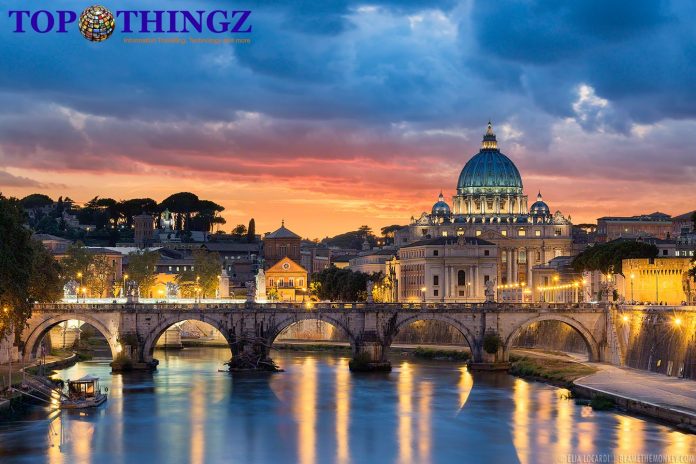
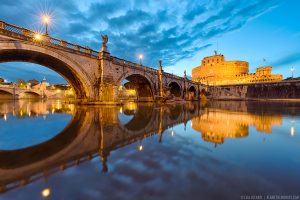
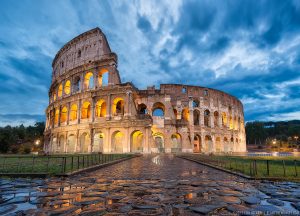
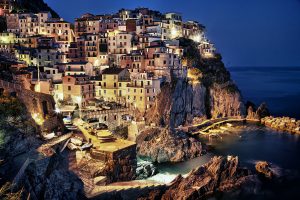
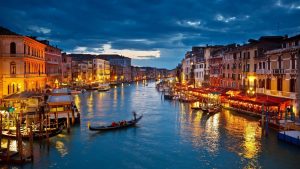
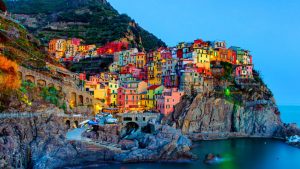
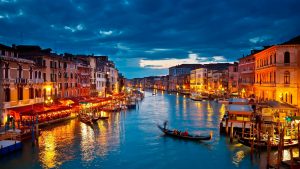
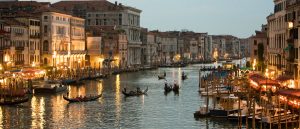
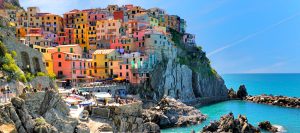



I am only writing to make you know what a perfect encounter my friend’s girl experienced going through your blog. She noticed many things, which included what it is like to possess an ideal helping spirit to have most people clearly know various tortuous subject matter. You actually surpassed her expected results. Thanks for producing the priceless, dependable, revealing as well as cool thoughts on the topic to Janet.